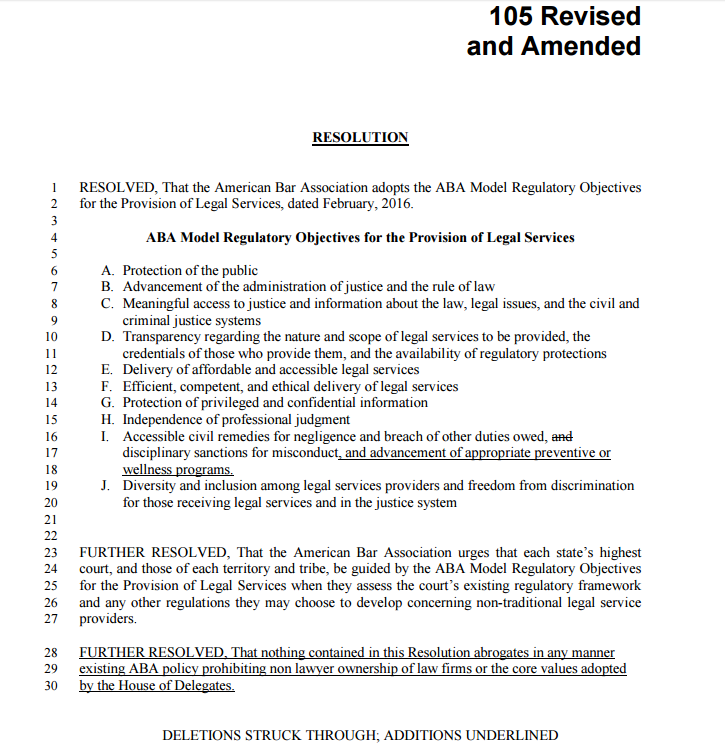ABA adopts model objectives
After substantial debate, at the February 2016 mid-year meeting, the American Bar Association (ABA) adopted Resolution 105—Model Regulatory Objectives for the Provision of Legal Services. At its core, the resolution, which came out of the Commission on the Future of Legal Services, “provides model regulatory objectives for state regulators considering how to regulate nontraditional legal service providers.” These nontraditional providers include both online startup businesses geared toward offering legal services as well as practitioners, like the limited license legal technicians (LLLT) operating out of the state of Washington. It is important to make clear that Resolution 105 was not about endorsing, authorizing, or actually implementing these practices. Rather, it was about creating model objectives which would help guide implementation processes down the road.

We’re not going to put the Internet back in a bottle. Let’s stand up and lead.
William Hubbard, former president of the American Bar Association (ABA)
To its supporters, the resolution was primarily about addressing the access to justice gap by outlining commitments that would put the ABA and the legal profession on a path aimed at lessening that gap—even if that meant incorporating non-traditional forms of legal services in a regulated manner. Supporters of the resolution also noted that many of the alternative forms of legal assistance, ranging from the aforementioned LLLT model to LegalZoom, already exist. As former ABA president William Hubbard noted in the course of the debate, “We’re not going to put the Internet back in a bottle. Let’s stand up and lead.” To its opponents, the resolution was nothing less than a “grave threat” to the profession. The ABA Journal notes that Marjorie O’Connell, the ABA delegate from the National Conference of Women’s Bar Associations, noted in remarks that her “members were ‘mad as anything’ at the prospect of handing legitimacy to poorly trained practitioners, particularly since so many female lawyers have struggled to be taken seriously.” Reflective of the differing views on the resolution, the Wall Street Journal wrote in a recent article, “The tensions around the issue reflect a broader concern within the industry over emerging competitive threats from do-it-yourself legal services, outsourcing, and new technology.” It is worth noting that prior to the resolution’s formal adoption, the ABA approved an amendment that added language to make clear that “nothing in the resolution [105] abrogates ABA policy on nonlawyer ownership of law firms or other core values.”
Following the adoption of Resolution 105, ABA President Paulette Brown noted in a statement, “The adoption of Resolution 105 is intended to create a framework to guide the courts in the face of the burgeoning access to justice crisis and fast-paced change affecting the delivery of legal services. … Moving forward, it allows the assessment of regulations that may develop concerning nontraditional legal service providers. The ABA recognizes the importance of evaluating the changes in delivery of legal services and the need for the ABA to carefully analyze these changes so that the public and the legal profession are protected and lawyers maintain the ability to serve their clients.” It remains to be seen how the model objectives impact the delivery of legal services—and the professional identities of legal professionals.



